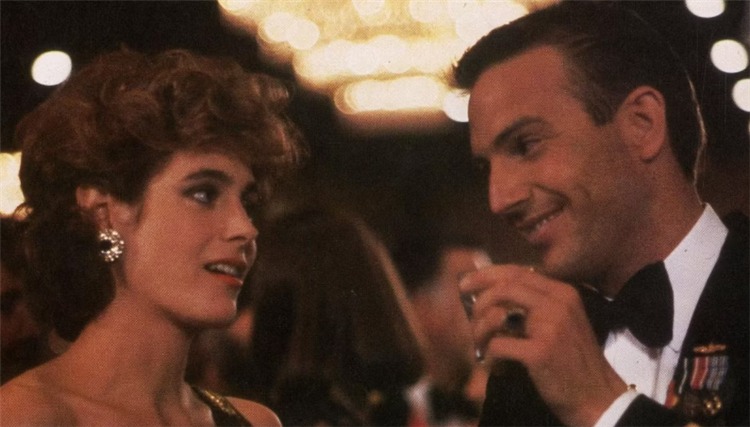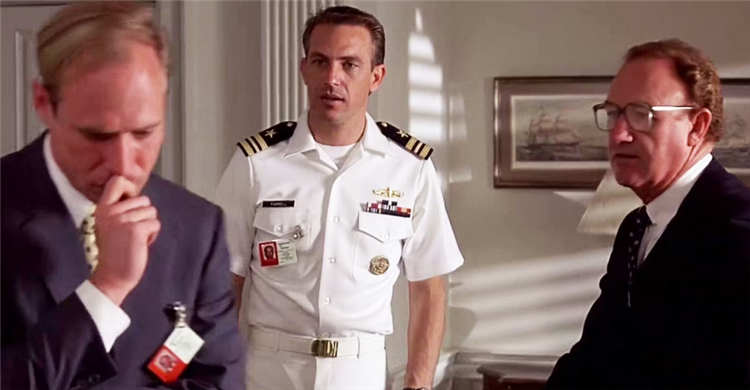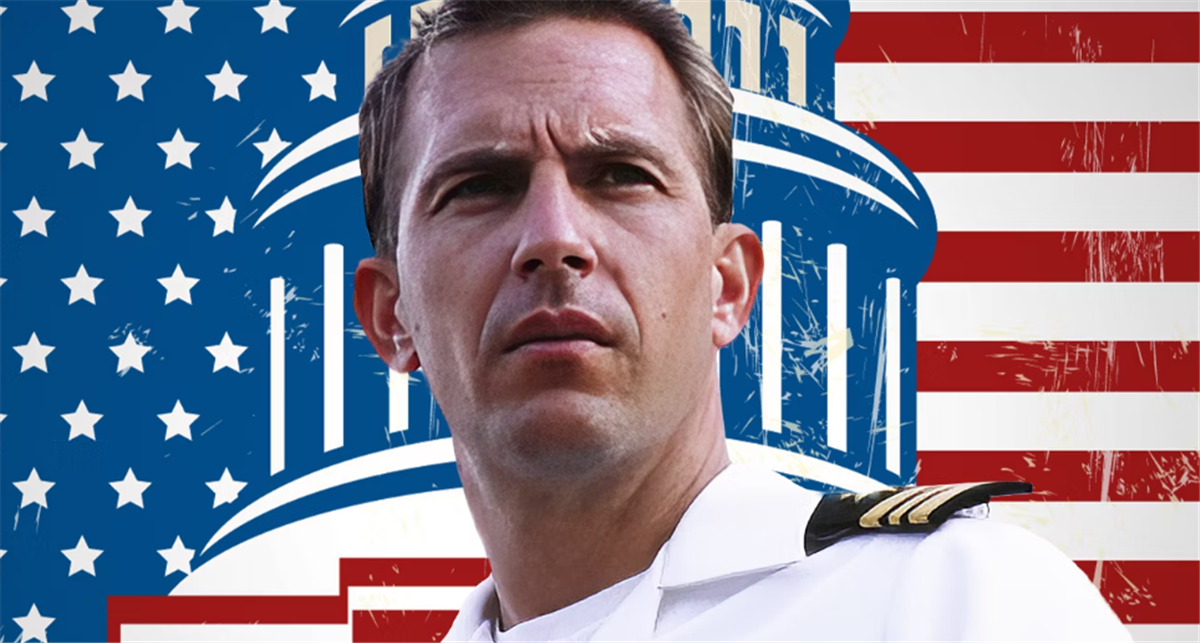While he is now primarily known as an icon of the Western genre thanks to the overwhelming success of Yellowstone and his neo-Western thriller Let Him Go, Kevin Costner helped prop up many underrepresented genres during the first stage of his career. Sometimes it takes the enthusiasm of a major star to help generate interest in a specific genre among average moviegoers, and Costner certainly helped modernize the espionage genre with a series of classics in the late 1980s and early 1990s. Political thrillers like JFK and The Bodyguard were far more commercially successful, but the underrated neo-noir thriller No Way Out certainly ranks among his very best projects. Although it reveals itself to be a much more complicated commentary on patriotism than it suggests early on, No Way Out is a rare classic that can only be watched once.
What Is Kevin Costner’s ‘No Way Out’ About?
Both set and released during the height of the Cold War between the United States and the Soviet Union, No Way Out is a political conspiracy thriller that examines corruption at the highest level of American intelligence. Costner stars as Lieutenant Commander Tom Farrell, a Naval Intelligence officer who is earnest and patriotic to an almost absurd degree. Although Farrell makes it a strict practice to keep his personal and professional obligations distinct, he begins to fall in love with the enigmatic woman Susan Atwell (Sean Young) after meeting at a mutual business function. Their brief, yet passionate affair is enough for Farrell to start seriously thinking about where he wants to spend his future as he prepares to take a trip to the Philippines.

Unfortunately for Farrell, the promising future he was reminiscing about is cut short when he returns to the United States to learn that Brice is having an affair with his employer, Secretary of Defense David Brice (Gene Hackman). While Farrell is forced to stay away by Atwell, who fears the consequences she might face should the affair be publicized, he realizes that she has photo evidence that suggests the Secretary of Defense could be linked to a covert secret service agent secretly working with KGB. No Way Out masks its eventual twist by pointing to a different villain. When an enraged Brice lashes out and kills Atwell by accident, it’s quite easy to assume that he is trading federal secrets to the Soviet Union.
The aftermath of Atwell’s death allows the viewer to fully invest in Farrell’s attempt to uncover the conspiracy; not only is he attempting to prove that his boss is involved in treason, but he’s attempting to help preserve the memory of the woman that he loved. Although Brice is able to avoid justice by creating a story that implicates his general counsel Scott Pritchard (Will Patton), the final scene reveals that Costner’s character was the real KGB agent the whole time. The enigmatic Russian spy known as “Yuri” was the codename that Farrell had used, as he was raised in a deep cover program from his youth in order to infiltrate the highest levels of the American government. Although it’s suggested that Farrell will return to the Soviet Union in the aftermath of the conspiracy’s revelation, the film ends on a decidedly ambiguous note that leaves it up to the viewer’s interpretation.
The ‘No Way Out’ Twist Changes the Villain
While a shocking last minute reveal has the potential to ruin an otherwise good movie, No Way Out has one of the greatest thriller twists because it is logically sound. Farrell’s interest in Brice’s crimes is initially perceived to be because of his romantic entanglement with Atwell. However, the twist reveals that he was politically motivated the entire time. While Farrell’s complete dedication to the truth makes him almost unrealistic when compared to the other United States military officers, it makes sense that a deep-level covert agent would be attempting to mask his cover. Desperate to retain the authenticity of his facade, Farrell remains completely committed to preserving his squeaky clean persona so that there will never be any questions about his loyalty.
The final segment of No Way Out is so chilling and effective that you may feel inspired to rewatch the film from the very beginning to see the hints about Farrell’s true identity that were made early on. Although it may be fun to point out the moments of foreshadowing, No Way Out has less emotional value upon a subsequent viewing. Knowing that Farrell is part of a larger conspiracy makes his attempts to uncover Brice’s crimes less empowering. It also makes it harder to fully invest in his romance with Atwell, as it is unlikely they would ever have a future together. It makes you wonder how sincere Farrell’s romantic feelings were in the first place.
‘No Way Out’ Was Made at the Right Time

Like many of the best films of the 1980s, No Way Out is a product of its time that was inspired by real world events. The real political tension within this era of American history allowed No Way Out to take advantage of the viewers’ paranoia about foreign infiltration and government cover-ups. While No Way Out has a universally interesting message about holding those in power accountable, the context of the Cold War may be lost on viewers who are revisiting the film in a modern context. No Way Out was more thrilling when its subject material was at the forefront of public consciousness.
Beyond the era-specific references to governmental policies, it would be very hard to pull off a plot twist like No Way Out did today. In an era where social media spreads spoilers for upcoming releases and trailers often give away too much, hiding the shocking ending of No Way Out would be a significant challenge. While filmmaker Roger Donaldson certainly does a great job at creating a suspenseful tone and earns some brilliant performances from his cast, there’s little value in watching No Way Out for those that already know the ending.
